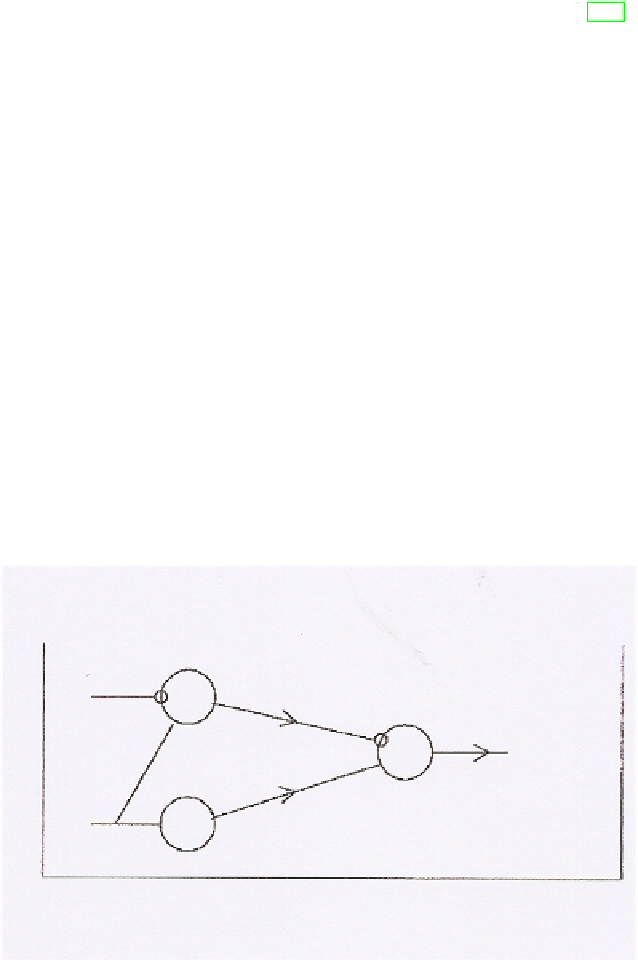Information Technology Reference
In-Depth Information
representing genetic information, while in his master's thesis he defined the electri-
cal circuit representing boolean functions.
John von Neumann, surely influenced by Turing's model, elaborated in 1945
the project of the first modern computer, realizing the standard von Neumann's
paradigm: EDVAC (Electronic Digital Variables Automatic Computer) [207]. The
circuits performing the basic arithmetical operations were based on the McCulloch
and Pitts model of neuron [9]. In this perspective, the electronic valve was seen as
the basic device for representing the neuron. In von Neumann's terminology a neu-
ral network is a graph of E-elements. These elements are connected by edges of two
different types: excitation and inhibition edges (with a small terminal circle) and
are labeled with delays (expressed by angles in the middle of lines). A neural com-
putation is performed by a network of E-elements which transform some boolean
signals entering in input E-elements into signals exiting from output E-elements.
In Figs. 4.15 and 4.15 simple graphs of E-elements are given, from the initial
section of von Neumann's report about EDVAC.
The thread connecting biological systems with computation can be found not
only in the first stages of computer science, but remains a constant throughout
its evolution. (see Kleene's famous paper “Representation of events in nerve nets
and finite automata”). L systems were suggested by plant growth, and cellular
automataare related to self-replicating systems (L systems are particular cellular
automata). Splicing systems or H systems introduced by Head in 1987 represent ge-
nomic operations in terms of string rewriting, DNA computing extends the frame-
work of formal language theory to double strings, and membrane computing extends
string manipulations to multisets (strings with commutative concatenation).
Fig. 4.15
A simple connections of three E-elements, taken from von Neumann's EDVAC
report



